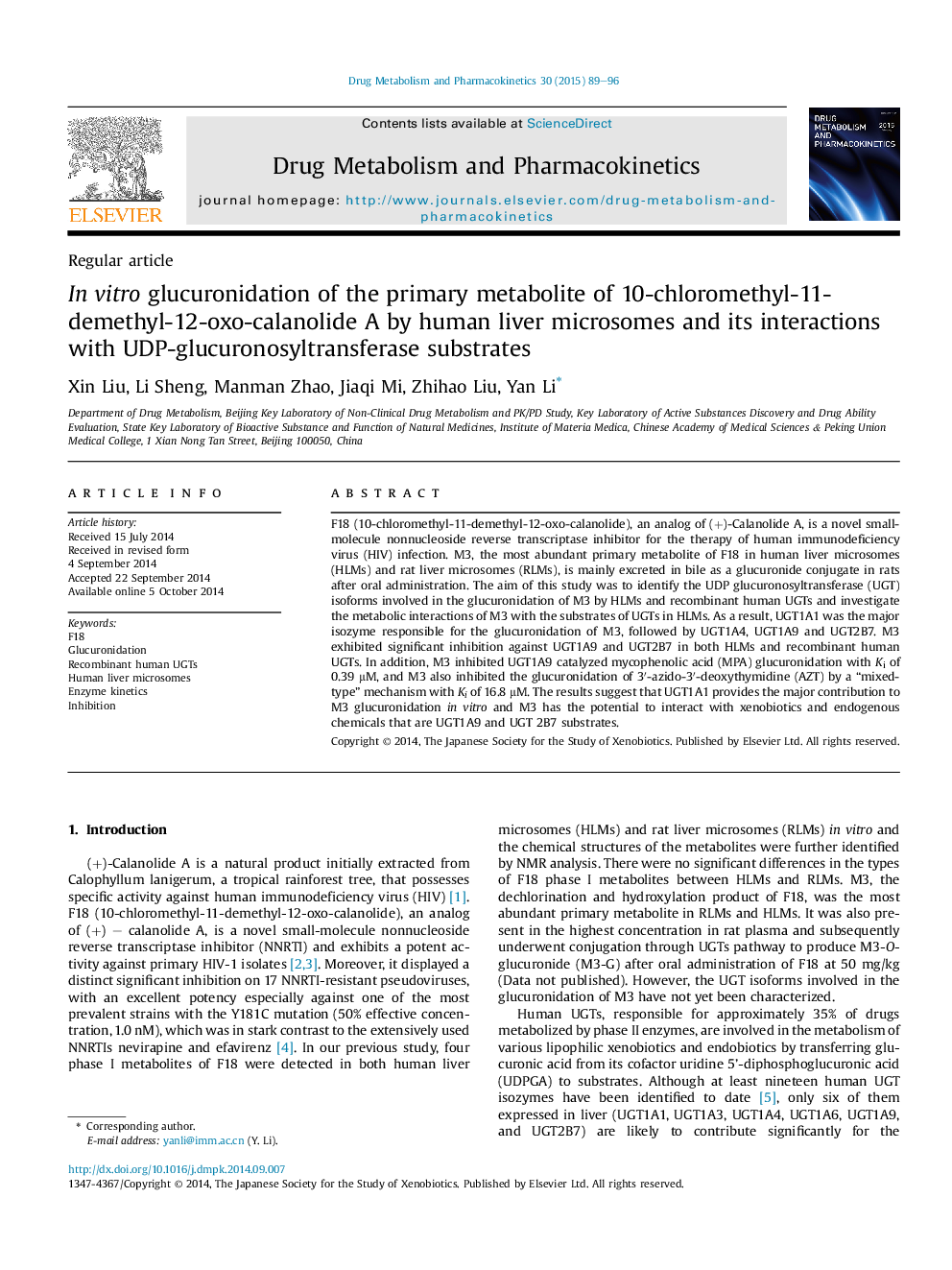| Article ID | Journal | Published Year | Pages | File Type |
|---|---|---|---|---|
| 2478904 | Drug Metabolism and Pharmacokinetics | 2015 | 8 Pages |
F18 (10-chloromethyl-11-demethyl-12-oxo-calanolide), an analog of (+)-Calanolide A, is a novel small-molecule nonnucleoside reverse transcriptase inhibitor for the therapy of human immunodeficiency virus (HIV) infection. M3, the most abundant primary metabolite of F18 in human liver microsomes (HLMs) and rat liver microsomes (RLMs), is mainly excreted in bile as a glucuronide conjugate in rats after oral administration. The aim of this study was to identify the UDP glucuronosyltransferase (UGT) isoforms involved in the glucuronidation of M3 by HLMs and recombinant human UGTs and investigate the metabolic interactions of M3 with the substrates of UGTs in HLMs. As a result, UGT1A1 was the major isozyme responsible for the glucuronidation of M3, followed by UGT1A4, UGT1A9 and UGT2B7. M3 exhibited significant inhibition against UGT1A9 and UGT2B7 in both HLMs and recombinant human UGTs. In addition, M3 inhibited UGT1A9 catalyzed mycophenolic acid (MPA) glucuronidation with Ki of 0.39 μM, and M3 also inhibited the glucuronidation of 3′-azido-3′-deoxythymidine (AZT) by a “mixed-type” mechanism with Ki of 16.8 μM. The results suggest that UGT1A1 provides the major contribution to M3 glucuronidation in vitro and M3 has the potential to interact with xenobiotics and endogenous chemicals that are UGT1A9 and UGT 2B7 substrates.
Graphical abstractFigure optionsDownload full-size imageDownload as PowerPoint slide
